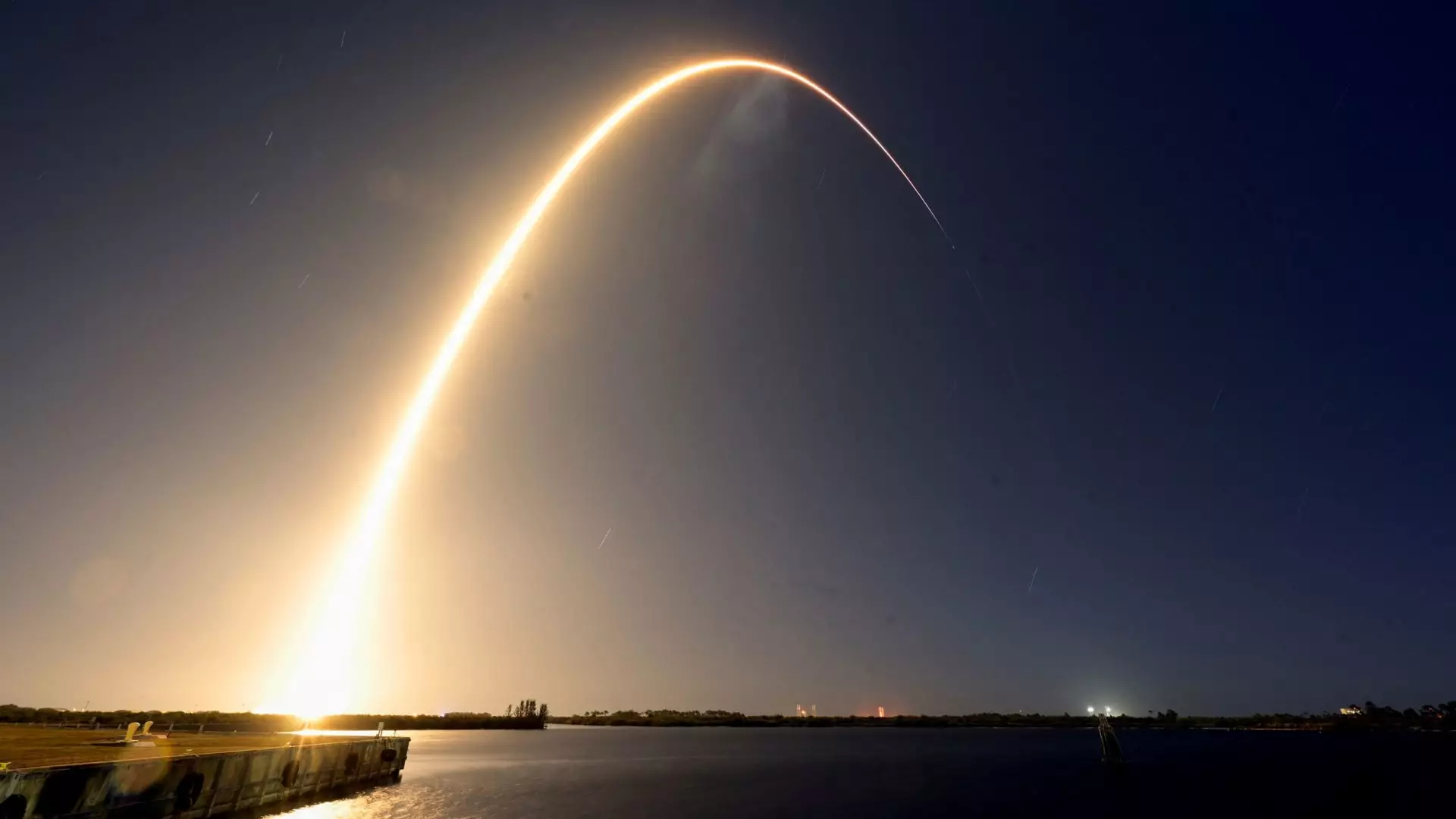In the ever-evolving realm of space exploration, American company Firefly Aerospace has set its sights on the Moon with significant ambition. The Texas-based rocket and spacecraft manufacturer is embarking on its inaugural lunar mission with the launch of the “Blue Ghost” cargo lander. This mission, propelled by SpaceX’s Falcon 9 rocket from Florida, marks a key transition for Firefly as it positions itself within a competitive landscape dominated by NASA-led lunar initiatives. The implications of this mission stretch beyond mere technological achievements; they signify a broader vision for humanity’s return to the Moon.
The Blue Ghost lander, aptly named after a rare species of firefly found in the United States, stands nearly 7 feet tall and is engineered to carry ten payloads from both governmental and commercial entities. This endeavor is backed by a significant $101 million contract with NASA. Notably, the Blue Ghost mission is part of NASA’s Commercial Lunar Payload Services (CLPS) program, aimed at enhancing partnerships with private companies to facilitate lunar access. Firefly’s efforts to broaden its scope from satellite launches to landing on the lunar surface underscore its commitment to becoming a key player in the burgeoning market for lunar services.
Firefly Aerospace has delineated an ambitious roadmap consisting of 17 milestones, with the successful landing of the Blue Ghost being one of the ultimate goals. To date, the company has reported the completion of five crucial milestones, including successful launch operations and spacecraft testing in orbit. The expected landing date is March 2, targeting the Mare Crisium lunar basin, a site chosen for its scientific value and relatively stable surface conditions. However, as past missions from competitors have shown, the journey to the lunar surface is fraught with challenges. Firefly’s commitment to meticulous preparation is critical, especially given that previous missions by other companies have met with mixed results.
Learning from Predecessors: The Competitive Landscape
Firefly Aerospace is entering the lunar market at a time when competitors are also ramping up their efforts. Companies like Astrobotic and Intuitive Machines have already attempted lunar missions, with varying degrees of success—Astrobotic’s mission ended prematurely, while Intuitive Machines’ lander survived a tumultuous landing. These early attempts serve as valuable lessons for Firefly, emphasizing the need for resilient designs and adaptive strategies in the face of challenges. As Firefly navigates its path, the experiences of these competitors can inform its operational strategies and technological advancements.
Firefly’s Blue Ghost mission is not operating in isolation. It is part and parcel of a broader tapestry of lunar exploration where collaborative endeavors are becoming increasingly necessary. On the same launch aboard the Falcon 9, Japanese company ispace also sent its lander, which represents the importance of rideshare agreements in cutting costs and maximizing payload capacities. This trend of cooperation among various space entities is likely to define the future of lunar missions, enabling diverse entrants to share the risks and rewards of exploration.
As Firefly Aerospace gears up for the Blue Ghost’s anticipated landing and operations on the lunar surface, the mission stands as a testament to the growing influence of private companies in space exploration. With the success of this mission, Firefly not only aims to advance its technological capabilities but also to contribute meaningfully to humanity’s long-term presence on the Moon. Looking ahead, this mission could pave the way for increased commercial involvement in lunar science and exploration as part of NASA’s Artemis program, highlighting the symbiosis between public aspirations and private innovation. As the countdown continues, the world watches with keen interest, anticipating what this next chapter in lunar exploration will reveal.

